Book marketing isn’t about vanity metrics or gaming Amazon’s bestseller lists—it’s about getting your book into the hands of real people who will actually read it and spread the word. My guest on today’s show is Alex Strathdee, founder of Shelf Life, where his team has worked on over a thousand books across more than fifty non-fiction niches. Alex is also the author of Before the Bestseller, which reveals the strategies that separate successful authors from those whose books gather digital dust.
In our conversation, Alex shares the three pillars of effective book marketing. He explains why giving away thousands of free copies can be the smartest investment you make. We talk about how to build an email list of ideal readers from scratch, and the exact tactics that turn casual readers into trusted Amazon reviewers.
We also dig into the psychology behind Amazon’s algorithm, the mistakes that confuse it, and why traditional bestseller campaigns often do more harm than good.
If you want your book to become a lead generation engine—or a powerful credibility tool—this episode gives you a practical roadmap to get there. So without any further ado, on with the show!
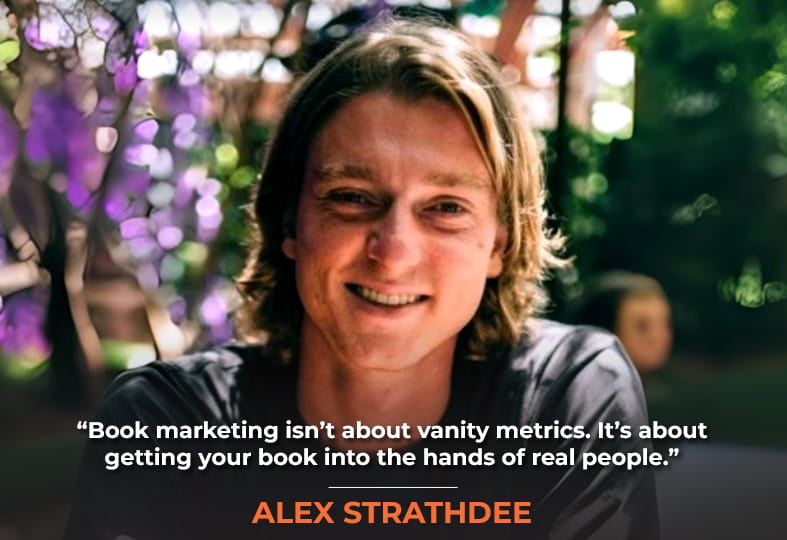
In This Episode
- [02:07] – Alex traces his journey from Virginia Tech to software sales, then to world travel funded by free flights.
- [06:51] – Alex highlights why real readership—not vanity metrics like Amazon bestseller tags—should be every author’s focus.
- [11:28] – Alex invites listeners to claim a complimentary copy of his book and shares how to connect with him directly.
- [14:02] – Alex introduces reader seeding: distributing books at events to eliminate cost barriers and spark momentum.
- [18:25] – Alex breaks down the role of Amazon ads and explains how organic sales fuel stronger ad performance.
- [22:23] – Alex underscores the power of building an email list filled with ideal readers to drive reviews and sales.
- [27:13] – Alex outlines typical ad budgets and details the flat management fee his agency charges authors.
- [43:24] – Alex recounts how one client drew international interest in foreign rights after first proving success in the U.S.
Alex, it’s so great to have you on the show.
Stephan, thank you so much for inviting me.
So let’s first of all talk about your origin story. Your superhero origin story. How did you end up where you are now, running an agency, and having just figured out a lot about the Amazon algorithm?
Depends on how much time you have. I graduated from Virginia Tech was a software salesman, also known as a sales engineer. So, I built demos, and it turned out to be the perfect life I didn’t want. Very bored. I didn’t feel like I was using my talents to their fullest extent. So, a quit that had a family member who worked for American Airlines had free flights around the world. So I used up about $16,000 worth of free flights, flying first class to places like Brazil and all these different fun places.
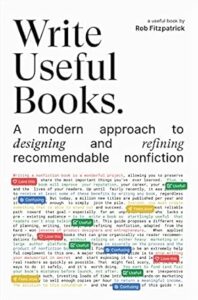
And then COVID hit. So, during that time, I started working for an indie publisher on the side, essentially serving as her online VA while traveling. Through her, I learned that authors often struggle with marketing their books. I had a similar experience when I released a book with that indie publisher back in 2018. And when I released that book, it’s the journey that a lot of authors face, which is where they sign up for a marketing package like an Amazon bestseller package, and they spend $5,000 to $10,000 on that package.
Unfortunately, some spend even more, and they think, “Oh, wow, I’m gonna be an Amazon Best Seller. That means I’ve made it.” And then they launch their book, only to discover that it doesn’t actually mean anything for bringing real people into your world, reading your books. Most of the Amazon bestseller stuff is just a scam.
And I remember during that journey that book marketing is hard. You actually have to do it. And so when I realized it was, it wasn’t just me facing that problem. It’s a common issue for most authors facing the challenge of book marketing, unless you’re James Clear.
And so it just became my focus and the problem that I really wanted to solve on behalf of authors, and we’re having some pretty success at that. Now. I’ve got a great team around me, and yeah, that’s what I wake up and do every day, which is I help authors get their books in the hands of real people.
And you came highly recommended. I learned about you from Dr. Ben Hardy. He’s a client of yours, and he just sang your praises. I was looking at an Amazon expert, like an advertising expert, that I could bring on board to help with a book project that my wife is going to put out. Orion, she’s working on a children’s book series, and your name came up. He was adamant that this is the guy for you. So I’m glad that we’re doing this interview now, and hopefully we’ll be working together soon. I’d also love to understand what you do beyond Amazon and how it fits into the bigger puzzle of book marketing.
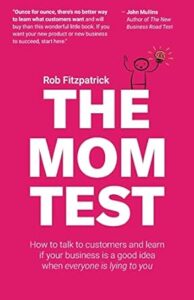
Well, I appreciate the kind praise, and I felt the same thing when Steve said, Hey, this guy, Stephan, wants to have you on the podcast. I was like. Wait. Stephan Spencer, like this guy, is one of the marketing greats. He’s interviewed everyone from Neil Patel to Jay Abraham. So I appreciate being on here. Humbled to be here.
I think of book marketing like building a house, and your roof is the number of copies that you sign up to get into the wild when you start again. There are different numbers you can go with Rob Fitzpatrick. He’s the author of Write Useful Books. Really great book on writing nonfiction. Useful nonfiction. Also wrote The Mom Test. He makes six figures a month from his books. Very accomplished author. He says that you need to seed 1000 copies into a community of people who know each other, for a book to take off.
On the other end, Bill Gladstone, who represents authors like Eckhart Tolle, Jack Canfield, and Marie Kondo, has a key insight: you need to get 20,000 copies into the wild for a book to become commercially successful.
So, the truth is that the number is between 10 and 20 thousand, and how serious you are about your book determines how you choose your number. And if this is just a flash in the pan project, you just wanted to get a book out there, then, you know, make your goal 1000, and if this is your next thing for the rest of your life, and you know, you really care about it, then your number should be 20,000, right?
So, how serious you are about your book is how you set your number. Once you have your number, you need to figure out how to break it down into different book marketing methods for getting books into the hands of real people. Many authors struggle with the goal of how many books they want to sell, but they often lack a clear plan on how to achieve that number.
If a strategy doesn’t put your book in real readers’ hands, it’s not worth doing.
So, this is the way to build your house: the walls are Amazon ads, the door is Meta ads, and the windows are reader seating. You find organizations and events that have your ideal reader as their attendee and members, and then you get copies in their hands.
There’s a whole bunch of different ways to get books in the hands of real people, and that’s what we’re focused on. Whenever we focus on a method that doesn’t actually get a book into the hands of someone real, whose problem we’re solving for, then it’s not something we care about, also known as an Amazon bestseller tag. We don’t do Amazon bestseller campaigns because they don’t actually do anything for older adults, except make them feel warm and fuzzy for about five minutes, until they realize they’ve overpaid for something.
So, that is our focus, and currently, we’re focusing on three key areas: e-reader seating. As I mentioned, I’m finding organizations’ events across the country that cater to the ideal readership, and getting in touch with dealers. It’s a great way to get, like, 500 copies in the hands of people at once. And then the Amazon ads, which I know we’ll dive deep into. And then Meta ads, obviously, are always a good way to do that. So those are the three different sorts of areas that we are heavily focused on right now.
So, reader seating, that’s where you find events where your ideal reader will be attending, and it’s enough of an audience that it’s more than maybe 100 people, maybe 500,000 or thousands of people. And you’re what’s gifting the book to all the attendees, you’re working a deal with the event organizer. How does that work?
Books don’t magically take off. People have to actually read them first.
Yeah, it’s exactly what it is. And a lot of people will hear that and say, “Well, I have to give away my book for free.” And it’s like, unless you already have an audience of a couple 1000, or you’re, like I said, James Clear, or something like, yes, like, you gotta remember to build if you want the success of James Clear, you gotta realize that that is a top .001% example, right? Like everyone doesn’t realize the work that actually goes into how he got there, right? I think it’s just like, “Oh, maybe my book will just take off magically like this.”
And it’s like, your book can’t take off magically if people haven’t read it. And if you’re a first-time author, you’re not, and if you’re expecting people to come buy your book, you gotta realize that you’re not just asking people to take a risk on spending the money. You also have to convince them to spend the time to open the book. And so, if you can remove the financial aspect, then all you have to do is convince them to open the book and read it.
So, I think many authors go wrong by not getting it. You’re an accomplished CEO and individual who has achieved a lot, and people should be drawn to your book, but they don’t know who you are. They’re unlikely to invest both their money and time in you, given the risk.
So, you know, like Joseph Nguyen of Don’t Believe Everything You Think. It’s one of the top-selling books right now, and I’m fortunate enough to work with him for going on two years now. He might currently be on the New York Times list, or he was at one point. He’s in the top 20 on the Amazon charts. I do know that. Which Amazon charts matter? I know he was recently on the New York Times list. He gave away 20 to 30,000 free copies of the book, including PDFs and physical copies.

But to make that book how it is, he did it over the course of a couple of years. Because obviously, that is a big investment. But yeah, reader seating. I know I just went on, got up all my high horse there, and went on with my monologue about reader seating. But yes, essentially that is what reader seating is, that you’re taking the friction of money out of the equation. All you have to do is convince people all the time.
Yeah. So, one thing we discussed before the recording was that you were willing to provide free copies of your book, like physical copies, with shipping included for listeners, before it became a best seller. And I just thought, wow, that is super generous, and now it makes total sense. Yes, very strategic of you.
Your audience doesn’t know me. They are obviously a fan of yours, and I get to borrow a little bit of your clout here, but by no means are they ready to spend money on my book. And so that’s why I’m saying, you know, I know it’s going to help them. I’ll ship it to them for free, so you know they don’t have to spend any of their money on it. And that’s as an early author, until people start hearing of you in like three or four places, you gotta hustle.
Yeah, so doing this for hundreds or maybe even 1000 copies is just kind of the cost of doing business as an author these days, right?
Jeff Bezos, he sourced what, I think, a million dollars in his first round when he was building Amazon, and, I mean, it’s like, one of the top 10 companies right in the world, right in terms of revenue generated, you’re gonna realize, if that’s what you’re going for, you need investment.
As an early author, you can’t wait for discovery. You have to hustle.
And an author, a lot of authors don’t realize that, yeah, they’re gonna put it again, if it’s just, like, a passion project, you just want to, like, get some copies. Like, that’s all fine, but if you want it to be, like, the next at the top book in your industry, like, it’s gonna take either time or money. You don’t have to do it the way I’m doing it. There are many ways to do it without spending money, but you need to be willing to invest time or money in marketing your book.
So, how can our listeners or viewers get a free copy of your book before it becomes a bestseller?
Yeah, absolutely. Just shoot me an email [email protected]. Getshelflife.com is our website. We also have all of our podcast episodes Before The Bestseller, where we interview authors who have sold over 10,000 copies, which is how I learned about book marketing, by interviewing all those people. So shoot me an email, and I will make sure that you get a copy shipped to your address for free.
That’s awesome. I wonder if there’s a strategy for bundling a book with another author who is also promoting their own books to increase discovery. For example, I worked with a client of mine, The Tuttle Twins, and Connor Boyack. We helped him with SEO, connected him with a great web design firm, and we also did a website redesign with Studio1. Greg Merrilees has been on the podcast multiple times.
In fact, we just aired an episode on the show deconstructing the redesign of the Tuttle Twins website. And so Connor has sold 6 million copies of his book series now. So, 6 million books, and a lot of those are handled internally now, not going through Amazon, but through their own warehouses and whatever else. They sell a lot of copies through their own website.
Every bestselling book is built on investment, either time, money, or both.
So, it just occurred to me while we’re talking: I wonder if I could bundle my wife’s children’s book with Tuttle Twins orders. If they get a free bonus, the customer and I could make it a compelling deal for Connor as well. Is that a thing? Is that something that authors ever do?
I love that you’re getting ideas from this. And I mean, I say, try it. That’s not something I’ve specifically heard of, but that is what this takes: creative marketing. And creative marketing is the best. Your highest leverage point is doing something in a way that hasn’t previously been done. And so I love the ideation.
Yeah, awesome. I’ll talk to Connor about that. Now, you have some really prestigious authors you’ve named, a couple of them that are clients of yours, and there are some great testimonials on your website. What are some examples from the 1000-plus clients that you’ve worked with, authors that have done outside-the-box thinking and really creative marketing?
We actually got event seating from Dan Heath. So, giving away copies to event attendees isn’t new, but we essentially saw it as okay with Joseph Nguyen; he’s given away 20 or 30,000 copies of his book. So, first, we were just going one by one on LinkedIn or using a polo to reach out to people, saying, “Hey, you want a free book,” and that is really freaking hard. The response rates might take you 10 years to reach 1000 copies, right?
So we’re like, “Okay, what are higher leverage points?” And then Dan Heath, we’re reaching out to people. And Simon got back to us and was like, “Oh, I run the SHRM,” which is like a national HR organization. And they’re like, “Oh, well, because we’re doing reader seeding for Dan Heath, you know, just reaching out to one by one for people to get his book for free.” This is Dan Heath. He’s a New York Times best-selling author, and he’s doing reader seeding, if you think that you’re above giving away free copies of your book. Here’s an example of a New York Times author who’s doing this for his latest launch.
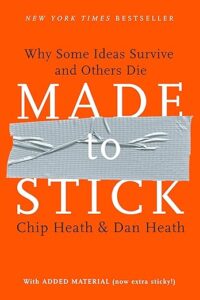
Dan has an impressive track record, and he and his brother Chip have written the book Made to Stick. Oh, such a good book to read, right?
Yeah, there’s a lot we got from that that we discussed internally as a team, like Commander’s Intent is like something that we talk about as a company now, and we got that from his book.
Actually, could you elaborate just for a minute on what that is for our listener who hasn’t read his book?
Yeah, the Commander’s Intent was my biggest takeaway from that book, and I don’t think it was the biggest takeaway Dan meant for me to have, or Chip meant for the reader to have. But as a company, a message. It’s essentially a message that stories help convey messages more effectively..Nobody remembers advice alone; they remember the story that feeds them. For example, the difference between “Teach a man to fish, he’ll eat for a lifetime, ” and the alternative, telling someone, “Oh, learn a skill and you’ll be blessed.” Right? People often forget that. People remember the Teach a man to fish quote, right? So, like, people remember stories.
So first of all, that’s like a big part of the message in the book. And so one of the stories that he tells is about how, in the 1950s, the US government basically knew that whenever they went into a battle, their commanders had the battle plan, they’d say, like, the only battle plan that stays true is the one that hasn’t actually been to battle yet. So the second I’d go into battle, the battle plan would go amiss, and they wouldn’t end up coming away with their intention.
And so what they came up with was Commander’s Intent, where the commander had to give their squad, basically, what the number one objective is that we want to take away from this mission, so that they wouldn’t get into battle. Like, “Oh, what do we do?” It’s like, “Okay, remember the objective here. Objective. Here’s what we’re doing. If things go wrong, it doesn’t matter. This is the number one thing.”

And so we train our team to think that way. For instance, when a team member encounters an issue, they may not know how to respond to a client. It’s like, okay. Our mission is to make our clients as happy as possible. So, you don’t need to wait for a response or ask a fellow team member a question to make a customer happy; just answer the question, like, “Wait, what do I do?” Okay, think through what will be the best result for the customer. So answer it that way and initiate something.
It’s basically a way for us to get our team to act autonomously, to think things through and be more proactive in how they tackle issues, instead of a million questions flying back and forth between the leadership team and whoever else is involved. So Commander’s Intent was a huge takeaway for me from that book.
Awesome. Thank you. Now I was interrupting you, and you were gonna go off and talk about something else, and I made you go back to the Made to Stick book. So please continue with where you were taking us.
Creative marketing is your highest leverage point—it’s how books break through the noise. Share on XYou could send me down so many different rabbit holes. I love monologuing, Stephan, so be careful with reset. Upon receiving it, we saw a response from this SHRM leader. He said, “I have an event with 150 people. Could we get copies for all of them?” I was like, “Wait a second, there’s something here. What if we could reach out to event organizers across the country and get our books in the hands of older people?”
And so immediately we’re like, that’s such a high-leverage point. We turned around and started working with one of our clients, who had written a phenomenal book called The FUSE Pathway. It is about bringing together science and art. He’s a famed inventor named Paul Kirby. We just got him an event with 700 attendees, and I’m amazed. The event organizer is about to receive 50 boxes of books for 700 attendees at his garage.
I’m grateful that he wants to store those in his garage until the event, but that’s what we’re talking about, and that’s how we figured out, “Oh, wow. Like event seating and such.” We’ve just started offering event seating, and we’re having great success with it so far. We’re also trying to send some bookmarks with the boxes of books. But yeah, we found event seeding to be a really effective strategy at the moment.
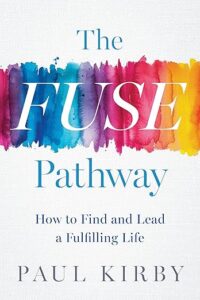
It doesn’t require that the author come and speak at the event.
Yeah, the author doesn’t have to do anything. A lot of authors come to us because they’re too busy to market their own books. We could offer them a package that includes the Amazon bestseller tag or some Amazon ratings. But will this actually align with their intended purpose for the book, which is to elevate their brand, generate business leads, or simply spread word of mouth about the book?
Like no and so like, that’s our focus is, to be honest, I think we’re pretty much the only people who are actually focused on getting books in the hands of real people and figuring out what are the best, most cost effective ways to actually help an author move towards their goal of getting that book to do what they wanted to do for them.
Let’s talk about the approach that a lot of folks are taking, which is to try to game the Amazon system, the best seller system, with buying groups and doing a best seller campaign. Could you explain in more detail what exactly that entails and why it’s not really legitimate?
I don’t know much about the buying groups, but I get the concept. I’ve never personally engaged with any of it, so I haven’t tested it. However, I can discuss the fundamentals and some aspects you should be cautious of if you are implementing that strategy.
At the end of the day, there’s no such thing as a free lunch in terms of your book not going to accomplish what you want for you unless you actually put some elbow grease into it or spend a fortune. And I mean, it’s going to be a fortune if you’re not willing to put any elbow grease into it yourself.
Your book won’t deliver results without consistent effort or significant spending.
So, when it comes to any way you think you can game a system, especially Amazon, it might only be temporarily effective, or it might actually hurt your book. For instance, there’s a platform called Pubby that’s specifically for Amazon ratings. I highly recommend avoiding it, especially if you’re a nonfiction author, since Amazon is essentially a recommendation engine. That’s where they differ from platforms like Meta or Instagram.
People are actually on Amazon to buy books. And so Amazon doesn’t just make money when an ad is clicked. They also make money when someone purchases a book, so it’s in their best interest to show the right book to the right person. One of the key pieces of data they consider when deciding who to show your book to is who has reviewed it.
So if you’re a nonfiction author and you’re using Pubby to get reviews for your book, then what you’re doing is that a majority of the people who do reviews on Pubby are fiction readers. You’re getting a bunch of fiction people to read your book. What is that going to tell Amazon? It’s going to tell them that your book is for fiction readers. It’s got to confuse the algorithms.
If you try to run Amazon ads, they’re not going to work. You’ll realize that everyone buying your book on that platform, especially your first 1000 readers, should be your ideal reader persona. That’s why I say mom’s purchase doesn’t count if they’re buying your book. They usually read like romance or fiction for kids’ books, which is going to confuse the heck out of the algorithms.
You think, “Oh, I’m getting a sale.” But I also think that those first 1000 copies won’t do you any good anyway, if it’s like your friend buying your book who has no interest in the topic, because there’s no chance of them recommending the book to anyone else if you’re not actually solving their problem.
Getting your book into the right hands from day one is key. Word of mouth only works with your ideal readers.
Now, if you’re like Joseph Nguyen, and this is part of why his book has taken off, it’s because his book is really for everyone. If you’re not solving their problem, they won’t actually learn from the book. They’re not going to be in that community of people who are actually facing the issue that you’re trying to solve.
That’s why we’re so focused on getting your book into the right hands, especially from the start, because it makes a difference. Then, when word of mouth spreads, you’re reaching the right people. They’re buying your book on Amazon. You’re sending the right message to Amazon. So I don’t know who’s in these buying groups. If it is a bunch of people who usually read in your genre, then sure, go for it. But if you have children’s book authors, fiction book authors, and a nonfiction author in the mix, I would highly recommend staying away from that.
Yeah, it makes total sense. So, is there a way you recommend getting real, legitimate Amazon reviews from your ideal reader avatar, and not just from the general public?
Yeah, absolutely. I can go through a few of them. One of the best things to do when starting your journey is to build an email list, as it is where you’ll get those initial reviews.
There’s a guy named Tim Grahl. He wrote a book called Your First 1000 Copies. You might have read it. Stephan, it is a phenomenal book. If you don’t have a list, I repeat some of the advice he writes about in my book because it is just great stuff, and I attribute it to him. Of course.
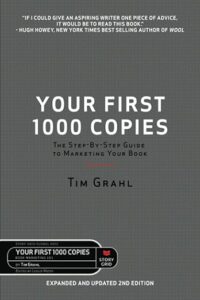
He says, like, “go and ask the people around you on LinkedIn, Facebook, just send a message, hey, I’m writing about x topic. I’m exploring this topic in a weekly 3-2-1 newsletter. I love the 3-2-1 format, which we can explore if you’re interested. Do you want to be on my list?” And that’s one of the best ways to quickly build a list of people interested in your topic. Do that until you’re at like a list of 100, 200 people, and that’s where you’re going to get your first like, 10,15, 20. You know, ideal reviews.
Now you’re asking them, and I’ve done this tactic before. You’ll get people to write back, and then you say, “No thanks, and that’s fine.” You just have to be willing to get rejected. They’re your friends. They’re not going to be mean about it, but you’re going to do it. But even like just loose acquaintances, like that person you went to high school with, right, who you haven’t spoken with in 20 or 30 years, just “Hey, I’m writing about this topic.”. And you’d be surprised how many of those people actually say yes, I actually find there’s a higher rate amongst those.
And again, you know, like, that’s why you’re telling them, “Hey, I’m writing about this topic. Are you interested?” If they’re not interested, meaning they’re not your ideal reader, they’ll say, “No.” You don’t want them on your list anyway. You want people who are your ideal reader, right?
So that’s how you’re going to initially build that email list that’s going to be really, really useful for them getting reviews when you release your book. So, having an email list, getting reviews from your email list is a great way, if you are at the point where you’re starting to get traction with your book, and people are reaching out to you via email, saying, “Hey, absolutely love your book.” One of the mistakes authors make is that they respond and say, “Oh, that’s great. Can you leave a review?” And there are two problems with that. The reader, first, doesn’t know what to write, and secondly, they don’t know where to leave the review.
Every author must decide: Is your book a flash project or a 20,000-copy legacy? Share on XWhenever someone reaches out to you and sings your praise in an email, it’s a good sign. Instead of asking, I got right to asking them for a review. Say, “Oh, what was your favorite part of the book?” They’re essentially writing the review without knowing it. They’re doing it because they want to share with you, as the author, what they liked about it.
And then once they send that to you, “Oh, that’s really great.” Give some context about why you added that part or whatever, and then say, “Could you actually copy and paste that right here in this link?” and send them the exact link to your review page on Amazon, which is a very specific link. And just say, “Hey, can you copy and paste that here?” And that overcomes the two main challenges people face: not knowing what to write and where to leave the review. So what if you started?
Obviously, if you don’t have people emailing you about whether or not they like your book, then you know your first problem is just getting started, which you are. That’s when we talked about the email strategy. But once you get traction and people are reaching out to you, saying they love the book, then that’s a good strategy to make sure you’re converting as many of those people into reviews as possible.
Start with an email list. One hundred true readers can generate dozens of authentic reviews.
And how big is a big enough list?
It’s never big enough. Don’t be afraid to get started with just 100 people. One of the biggest mistakes people make early on is focusing too much on getting 10,000 subscribers. Instead, they should focus on achieving their first 100, and once they have 100, their next goal is 200.
For my first 1000 subscribers, I manually added them. And the way that I did that is every single conversation I was having, at the end of that conversation, I would say, “Oh, I write about this stuff, you know, like, what’s your email? Let me add you to it.” Another way to start your list. I did this as well. Already had a business around for a bit, and so I just reached out to, you know, all my current and past clients, and just said, “Hey, I’m gonna start writing about book marketing. Like, do you want to be on the list?” And I think I built up to around 150 that way to get my list started. This was about four or five years ago, and I manually added my 600th and 800th contacts, essentially anyone I spoke with about book marketing. I’m like, “Hey, let me get your email.”
If I were to say a good list is 50,000, like, you know, you’d hear that and be like, “Oh, crap. I’m never gonna get there.” Like, wherever you are in your list journey. Just be super diligent about collecting those emails with whoever you talk to. And if 100 is all you can muster for the time being, then 100 is perfect.
1000 is what you can muster, then I think you start getting impactful book sales at around 1000 subscribers, because you’re only going to convert maybe a good conversion rate of those, which might be 20% or that’s actually a fantastic conversion rate is getting 20% of those people to buy your book if you have 1000 subscribers.
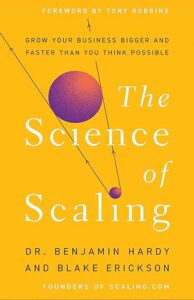
And the other thing to focus on is open rates, right? So, if you have a list of 10,000, I’m sure you’ve discussed this in previous episodes with people much smarter than I am about email lists. But you know, if you have 10,000 emails and only 1% of them are actually opening your email, I’d rather have a list of 100 people who are opening your email. I’d rather have a list of 1000 people with a 50% open rate, right? That’s five times the impact. You know, talk about some ways that you can make sure that that stays high, but stays high. But you know, again, I think there’ve been many smarter people than I on this program that talk about email list, so focus on really providing value in those emails week over week.
Yeah, but let’s talk about Amazon ads, because that’s an area of specialty for you guys. You’re recognized and renowned in that area. What’s a typical budget for the advertising spend with Amazon? What’s it cost for the management fee to work with you, and how many books would a typical author that you work with sell in the beginning, first few, four or five months and then maybe later on, 6,7,8, 10, months later?
The way that an author can think about whether or not Amazon makes sense, and the way to think about the game that you’re playing as you go into it, is what are all the ways that you’re currently getting books out, and what is your cost per reader? On Amazon, your goal is to determine your cost per acquisition.
We work with a variety. We work with traditionally published authors. We work with a lot of self-published authors, and everything in between. The traditionally published authors are not going to make money, no matter what. You’re not going to make money on Amazon. Your royalty rates are usually between 7% and 12%.
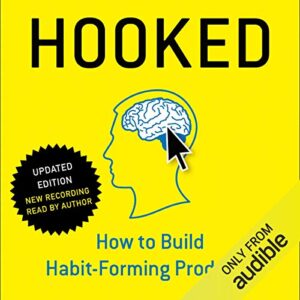
As a traditionally published author, you can expect this rate when advertising on Amazon. And again, we have many. Your goal has to be something else, as you mentioned. Dr. Benjamin Hardy’s approach is to drive people with his new book, The Science of Scaling, into their Scaling program. There’s got to be some sort of back end that you’re looking for there.
For self-published authors, many remain profitable in their Amazon ads, as seen with Joseph Nguyen, whom I mentioned. Amazon ads will never be the thing that makes your book famous by itself. The days are gone when you could just put a book up. I think it was Nir Eyal’s first books, Hooked. That book was actually self-published before Penguin picked it up. I think it was Penguin, and you ran some ads, you had some early success, and you could make a name for yourself as an author on Amazon, back in those days.
The competition is much fiercer. Now, in 2025, most authors are competing against people trying to get leads from their book. And so the cost per click, where it used to be like 20 or 30 cents, is now like $1, $1.50. Hence, it’s much, much harder, not saying it’s not possible, but if you are going to be profitable on Amazon. You need to already have a trickle of organic sales coming in from elsewhere, and you need to be self-published, or your royalty rates are higher for those authors as well. It’s a flywheel effect.
When Amazon sees that people want your book, it’s kind of artificially inflating your landing page’s conversion rate, right? If you’re sending a lot of traffic to your listing, especially if it’s just Amazon ad traffic, you might only get one in 10 visitors to buy your book.
Your first 1,000 readers must be your ideal readers—or Amazon’s algorithm will get confused. Share on XIf you’re on a podcast and 20 people hear about your book, maybe 15 will actually buy it on Amazon. That’s a much higher conversion rate of people visiting your listing who are actually buying the book. And so. That’s indicating to Amazon, “Oh, wow. Like, this is a really high-impact listing. If all we need to do is show this to more people, we’re going to get more sales.”
And so that’s why it’s so important to have organic sales and be driving traffic to your own listing, because then Amazon sees it and they’re like, “Oh, wow, we should show their ads more, because they have such a high conversion rate when the people get to their listing.”
So, that’s why it’s crucial to understand that the Amazon game is similar to anyone who thinks, “I’m going to build my entire marketing house.” This brings us back to the beginning of our conversation, where we discussed houses as a marketing analogy. Anyone expecting Amazon to be the sole solution for their book marketing will not succeed. And, you know, there’s always the asterisk, you know, maybe one in a million books might work, but for the vast majority of us, it’s not going to. And so that is where organic is so important.

We do not take on an author unless their monthly budget on Amazon is $1,500 or more. That’s like a strong budget to really start testing stuff. And that’s because we do have a lot of authors who come to us and say, you know, Amazon is kind of my primary way of marketing my book, and it’s like,” okay, well, then we’re gonna need a lot of money to start pumping the right numbers and getting the right data on Amazon.” If they’re already generating organic sales, we usually scale up to a $1,000 or $ 5,000 budget pretty quickly.
People pay us for results. If we have people come to us all the time, they’re like, “Oh, if I want to put like 500 bucks towards Amazon”, I’m like, “Look, it really can’t help you, because we’re not gonna be able to get results for you. We need some budget to start moving books on Amazon.”
The average author who works with us moves around 60 to 70 books per month on Amazon, which is a pretty low number, a lot lower than I think people understand. And that’s because many of our authors are seeking opportunities from their books. And so those numbers make sense for them.
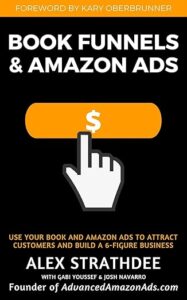
On the higher end, we have authors moving 10,000 plus copies per month. So, don’t get me wrong, there’s a much higher standard, but we’re being fully transparent about our expectations. Because I think a lot of people are like, “Oh, I’m gonna move hundreds of books on Amazon, and I have no other marketing that I’m doing.” It’s like, “We have authors who do that, and they’re paying to move books on Amazon without any other marketing going on. And that’s how much you can expect to move on Amazon with that kind of a budget when it comes to specific campaigns and how to get started.”
If you are getting started on Amazon, you’re running your own campaigns. So let’s say you’re like, “I don’t want to pay the management fee for someone else to manage my campaigns. I don’t have the money, but I do have time. I’m retired. I’m going to see what I can do with this book on Amazon.” You want to start with manual campaigns until Amazon has a good idea of who your reader is, because if you just run auto campaigns, Amazon won’t know who your reader is.
If you’ve sold more than 1000 copies on Amazon, that’s when I think auto campaigns start to be effective, because Amazon has enough data. Again, yeah, they’re looking at your keywords and title, but the biggest thing they’re looking at is your readers. And so auto campaigns start to kick in. Amazon starts to show your book more once they see that you have readers and their own reader profile.
Unlike Amazon, which doesn’t let you target based on someone’s reading preferences, it just lets you. It’s pretty straightforward targeting, but they do let you run auto campaigns, which allows them to make the decisions on your behalf, right? And making those decisions on your behalf. They need the data for it. So, I’d say you need at least 1000 readers on Amazon before you can start being effective with older campaigns. Before that, focus on manual targeting by going after specific products and keywords.
Once you’ve sold around 1,000 copies on Amazon, auto campaigns become more effective because Amazon finally has enough reader data to optimize.
Got it, okay? And you do the keyword research and all the prep work involved with that?
Yeah, I like to think about Amazon ads versus other platforms like, you know, skiing versus snowboarding. Skiing is way easier to learn, but way harder to master. Snowboarding is way harder to learn, but way easier to master.
The Amazon ads are kind of like skiing. They’re pretty easy to learn. So any author can pretty much get started with them. The reason they’re hard is that Amazon is a sales platform itself, building all these other marketing tools that work successfully. This is what we do, which is what influences your Amazon ads and gets them to perform much better. That’s where you start to have success.
So, where is it easy to learn? Yeah, it’s easy to set up product targeting, targeting ASINs (codes for books), or targeting keywords and what people are searching for. Where it gets a little more difficult is when you start trying to, like, rank organically in other people’s pages and like that next level, getting the right reviews, using editorial reviews for people who you’ve got editorial reviews for, they’ve written their own books. You want to use that as ad text in their books. Like, there’s some sort of next-level start, where you start to get deeper into it. And that’s not to oversimplify it, but it is very easy to get started, but very hard to master.
What are some standout examples from your clients? And I know you’ve had some really great ones, by the way, was Nir Eyal, a client of yours.
Yeah, and I think we’ll be working together on his next book, where I actually got to go. I went to Singapore earlier this year, and actually got to have breakfast with him, which was a really cool experience. Just sit down with him. And we had been running ads for him for some time before that, and we just got to talk about all things book marketing, which was really, really a cool city.
Yeah, cool.

I always love doing that. I’ll fly across the world to go talk to an author that I idolize. We were moving hundreds of copies a month for a cost per reader of around two to three bucks. So it just made sense for him. I have a wall of many of our top authors behind me, which is how I like to reflect on and think about the different books.
Allan Dib of The 1-Page Marketing Plan. He’s a lot of authors set up their campaigns back in like, 2016, 2017 and then have been letting them run since they’re just like,”yeah, they move books” but, you know, like, “don’t want to touch them because maybe they’ll break.” Well, like, “that’s why you get an expert. You get an expert team.” We were able to increase Alan Dibbs’ sales last year by 36% with The 1-Page Marketing Plan on Amazon, which is a pretty significant boost. This, in turn, had a significant impact on the back end, particularly with The Coaching Habit.
He sold, like, a million copies or something like that.
He has, and I’ll tell you, don’t get me wrong, he was successful before us. I don’t want to, like, start a rumor that we made Alan Dibb successful. By no means was he already successful before us. We just took his sales and then increased them by 36%, which is a pretty big dent, but he’d already sold close to a million before working with us.
He’s an amazing guy. I’ve had him on the show, like, I’ve considered him a friend. He’s been on my show. I’ve been on his show. Yeah, cool guy.
He’s a fellow Aussie too, which I love. I was born in Australia and moved to the US when I was eight. I’ve always loved my fellow Aussie authors, especially The Coaching Habit. We’ve been working with him for a few years. That book has over 16,000 Amazon ratings.
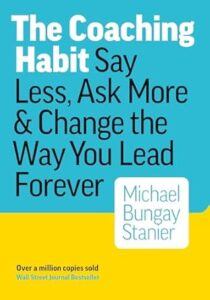
Now we’ve been able to significantly increase his book sales year over year. The pricing roadmap. This is one of those authors who actually paid a book marketing company 10s of 1000s of dollars. Before he found us and got no results, like it was all vanity metrics, he was paying an agency to find him opportunities, but not actually do any, you know, enact any of them for him. And so that’s where he just cut it off entirely. We were lucky to have a chat with him, and since then, he’s closed millions of dollars in business from leads that have come from that book.
We’re moving on the back end, I think, like 200 to 400 copies of the pricing roadmap per month. That’s for him, a self-published author, so he gets royalties back. And after you take away his book royalties, I think he’s getting around $3 per reader for The Coaching Habit. I mean, like Allan did, but obviously, he’s breaking even or better on his book. He’s also getting a lot of organic content, such as the impressive The Rising Leader Handbook. I mean, there’s only so much we can do when working with a book. If the book is bad, and let’s say we get 1000 copies into people’s hands, if it’s not good, those 1000 people aren’t going to tell anyone.
But when we market a really good book, it’s like, my favorite thing, like, you know, authors always say, like, they’ll thank us for the work that we do, and I’ll say, “No, thank you for writing a really good book, because it makes our lives so much easier.” Like, we’re able to be successful with you.
The Rising Leader Handbook is one of those. I don’t know what it is, but, I mean, we’re moving 600 copies a month of this book, and it is from an author who he did have a seller, Mark Silverman, also, like the nicest guy I’ve ever met, he had a hit best seller a few years ago, and he just kind of put this book up. He’s done nothing else, and, man, people are just taking to it.
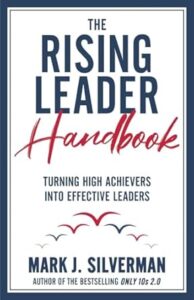
So it’s perfectly suited to his audience. And that’s something we’ve discussed internally as well, as it’s challenging because we handle all the marketing, but we don’t control the product at all. So we’re aiming to start at the best possible time for an author to speak to us, which is about a year before launch. We’re not going to charge them anything until we get to that launch, but we want to start pointing them in the right direction, like, “Hey, here’s the search traffic.” Like that points towards like, “what you should be thinking about naming it,” or, like, “how you should package it.” I know you’ve had Pat Flynn on. I was actually just listening to your episode with Pat Flynn, or your wife had interviewed him, because you had your voice.
His whole thing is that you can give people the message they need, but the way you package it —the book cover and title—needs to be like Advil, wrapped in a little sugar-coated candy. You need to put it in the sugar-coated candy of what people want, and then in the book, you give them what they need. So, that’s a significant aspect of marketing that we need to figure out a better way to approach. Because once a book comes to us, we can’t really change the title or the cover.
Yeah, good stuff. Really good stuff. I know we’re getting close to time here, and I want to touch on Meta ads, as well as licensing the book to other countries and languages. So, just to wrap up this part of the conversation, even breaking even with a self-liquidating offer allows you to funnel more and more money to Amazon advertising, making enough to break even. This approach gets more copies in the hands of potential evangelists, not just readers.
So how long does it take to get that flywheel going, if we’re starting, let’s say, today? Is it four months from now that we’ll get that traction, which may become self-liquidating? Is it six months? Is it eight months?
Most authors will never get to a self-liquidating standpoint. Many of the authors we work with aim to sell a million-dollar coaching package on the back end of their book. I think the best thing an author can do is ensure their leads are trackable from Amazon.

So like the great thing about self publishing is you can upload a format to Amazon that has QR codes specific to those who are buying books on Amazon, and so just knowing your funnel, I think, is really good point at self liquidation is a lot more difficult of a question, because what matters is, what else are you doing to market your book? I mentioned earlier in the conversation that Amazon prioritizes books with a high conversion rate on their page. You can reach this goal, but it requires other robust marketing activities outside of Amazon.
Amazon is like a rising tide; Floyd sold books, right? And it’s like those are successful, you know, like, what’s the easiest way to make a million dollars? Have a billion dollars, you’ve got to be doing other things to be pushing your book for Amazon ads to be at that point where, you know they’re performing and well enough so that you’re breaking even on your Amazon ads.
So, that’s a misconception many people have about Amazon ads: when we hear it, we think, “All right, we’re going to have this conversation again.” Here’s how it works, basically. As I mentioned in 2016, running Amazon ads could pretty much guarantee your ads were profitable. Those days are gone.
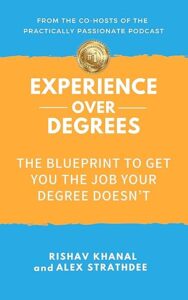
Okay, so let’s move to Meta advertising. How does that fit into the picture here?
Yeah, speaking on the previous thing, you know, that’s why, like Steve, you’ve spoken with these, you know, former Amazon ran all of the sales for Goodreads. We’re lucky to have him on our team. Now. We’ll speak to maybe 40 authors in a month, and we only end up working with five to 10 of them because of the fact, you know, expectations is like, they’ll be like, “All right, so I’m going to make my own Amazon ads,” and we’re like,” here’s all the things you can do to market your book. When you’re doing those, come back to us. Amazon ads are not going to be the thing that that are going to make you profit on a book that you’re not marketing in any other way.”
Meta ads: you’ll have to talk to them. Maybe you’ll have to have my number two on who got me this sweet Hawaiian book marketing shirt? Laura Russom. She’s our resident expert on meta ads. So she actually wrote the whole chapter in my book about Meta ads. Oh, tree, obviously attributed to her. So I’m not the go-to expert on meta ads. I just know, obviously, targeting is getting harder. It’s more difficult now because of security privileges on the iPhone. You can no longer attribute sales accurately, since most people are buying things on their phones.
But Amazon loves it when you drive traffic to your page by running meta ads. Amazon ads tend to perform well; we’ve seen improvements ranging from 10% to 50%. This is because Amazon loves it when you drive traffic to Amazon from external sources. And for the first thing, they’re hitting your book page, then they’re gonna reward you in terms of better rankings and also sales rank overall. So the best part of med ads is that they work super well in combination with Amazon ads, again, because of that added traffic that you’re driving to Amazon, and kind of like a scratch my back, scratch your book your back, type thing.
So let’s move on to our last question, licensing. I recently had Dr. Yaniv Zaid on the show, and one of his strategies is to attend the Frankfurt Book Fair with a group of fellow authors. He organizes meetings at the Fair.
And what happens for some of his clients is they get deals where they, let’s say, get a royalty or a licensing fee for selling that book to a publisher or to some sort of distributor in, let’s say, Vietnam or Thailand or whatever, and the book gets translated. And next thing you know, it’s a best seller, with 100,000 copies sold in Vietnam. So he actually has copies of his book in Vietnam. You know, that’s a pretty cool strategy, if it works. And I’m curious to hear your take on that.
I think showing traction in the US is how you get people interested in you. Funny enough, they asked this question a week ago, and we actually got someone who submitted on our website saying, “Hey, we want to talk about foreign rights for your book.” So maybe it was one of these people that you’re talking about. I’ve never negotiated before. I told Steve. I was like, “Hey, if you want to figure it out, I’ll give you 20% commission. I don’t have time to figure out foreign rights. Figure out foreign rights. Go for it.” So I can’t really speak to that.
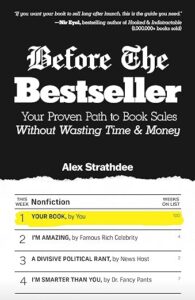
As you’ve realized here, Stephan, and for everyone listening, I get really passionate about the things that I do know and for the things that I just don’t know I’m not the expert on. I will absolutely tell you I am not the expert on that, and foreign rights is not something I know anything about.
All right, no problem. So, just before we wrap up here, if our listener or viewer is interested in working with you and your company, you have a minimum budget of $1,500 a month for media spend. Still, you also have a flat management fee of $1,000 a month, regardless of how much you spend.
Exactly. So it’s a flat fee of $1000. We manage a budget of $40,000 a month for one author’s Amazon ad spend, and we still charge him just $1,000.
That’s amazing. I heard from Steve that you actually had one author spending $100,000 a month at one point.
Steve might have gotten his numbers slightly wrong. Okay, wrong. I think maybe 60,000 is the highest we’ve gone in a month.
Okay, that’s still a lot.
Yeah, from what we understand, Amazon actually now sends us leads like themselves, which is cool. They view us that way. They sent us one client. That’s one client who has the most ad spend of anyone. And we’ve gone back. We’ve asked Amazon, “Hey, is anyone spending more than this person on Amazon?” They’re like, “No, this is the top spending work person on Amazon right now with their Amazon ads with books.” So that was, like, a fun little claim to fame. We’re handling the biggest budget anyone spends on Amazon, which is pretty cool.
Meta ads can boost Amazon ad performance 10–50% by driving outside traffic to your book page.
When it comes to working with us, we do a four-month minimum, because when authors come to us, they pay us for results. Again, we are so careful about who we take. Steve will have a conversation with you to determine if your expectations align with what we believe we can deliver for your book. We’ve worked with so many books that we can look at the genre and your current marketing mix to give you a pretty accurate idea of what you can expect.
That’s why we are so careful about who we take on, because we have a 100% guaranteed refund if you’re not satisfied with our work. All you have to do at the end of four months is tell us you’re not satisfied, and we’ll completely refund you our four-month service fee. We take it very seriously who we work with, because it pains us if we bring on the wrong person. We think we’ve generated some revenue four months later, and then handed it back. That really hurts us. So we’re really serious about who we bring on.
So, if you think Amazon ads might be for you, we’ll have an honest conversation, and you’ll know when Amazon’s ads make sense. If we believe your expectations align with what we can deliver for your specific book, we’ll work with you. So that’s why we do the four-month minimum, and that’s why we work the way we do.
Yeah, awesome. Well, thank you, Alex. Again, your website is getshelflife.com and your email address is [email protected]. They can email you to request a free copy, including shipping, Before The bestseller, and also to express interest in collaborating with you.
Stephan, thank you so much for taking the time to have me on. As you know, I love to monologue about anything book marketing-related. So, I really appreciate the chat.
And I appreciate you sharing your wisdom and being an open book, pun intended. All right, awesome. Well, thank you. Listener, thank you, viewer. Make it a fantastic week. We’ll catch you in the next episode. I’m your host. Stephan Spencer, signing off.
Important Links
Connect with Alex Strathdee
Apps/Tools
Books
Businesses/Organizations
People
Previous Marketing Speak Episodes
Building Trust Through Design: A Case Study with Greg Merrilees
Build Your Business With The Strength Of The Parthenon with Jay Abraham
Digital Course Website Overhaul: A Case Study with Greg Merrilees
E-commerce Redesign Secrets: A Case Study with Greg Merrilees
From Setbacks to Superfans with Pat Flynn
Go Lean to Achieve More with Allan Dib
High Converting Landing Pages with Greg Merrilees
How to Build a Digital Marketing Agency with Stephan Spencer and Greg Merrilees
Local Services Website Teardown: A Case Study with Greg Merrilees
Making Money While You Sleep with Neil Patel
Marketing Strategies of Dr. Persuasion with Yaniv Zaid
Secrets to a Persuasive Website with Greg Merrilees
The One-Page Marketing Plan with Allan Dib
The Real ROI of Good Design: A Law Firm Case Study with Greg Merrilees
When Clean Design Kills Conversions: A Case Study with Greg Merillees
Wisdom That Transcends Marketing with the Legendary Jay Abraham
Previous Get Yourself Optimized Episodes
Previous Orion’s World Episode
YouTube Video
Your Checklist of Actions to Take










About Alex Strathdee
 Alex Strathdee is the founder of ShelfLife, where his team helps authors get their books in the hands of real people. After working on over 1,000 books across more than 50 nonfiction niches, Alex wanted to know what advice he could offer his authors whose books weren’t selling, specifically, why they weren’t selling.
Alex Strathdee is the founder of ShelfLife, where his team helps authors get their books in the hands of real people. After working on over 1,000 books across more than 50 nonfiction niches, Alex wanted to know what advice he could offer his authors whose books weren’t selling, specifically, why they weren’t selling.


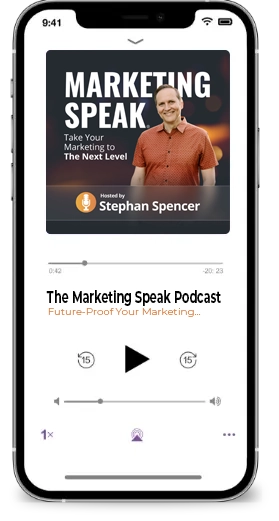





Leave a Reply